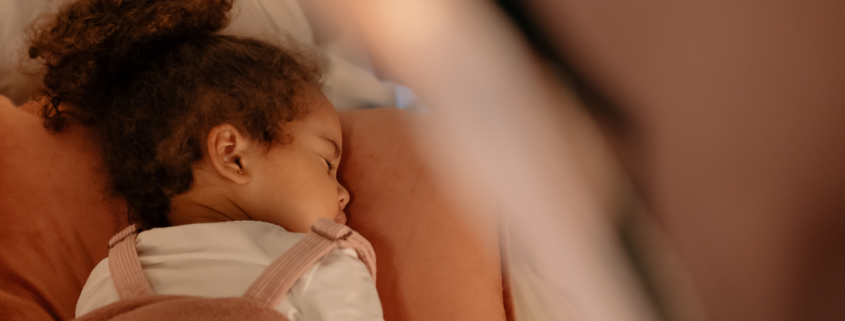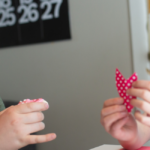Did you know that poor sleep in kids is linked to social, developmental, and behavior difficulties, irritability, academic challenges, and learning difficulties.
Here are a few important things to do to help your kiddo get a restful night’s sleep:
- Set a routine. Start winding down about an hour before bed. Avoid any high energy activities. The bedtime routine should be the same every night, lasting about 20-30 minutes, and include consistent calming activities (i.e. brushing your teeth, taking a bath, and reading a book). Always finish the routine in their bedroom.
- Keep consistent bed/wake times. Try not to deviate by more than an hour on days where kids do not have school.
- Create a calm bedroom environment. Keep your child’s room dark, calm, and comfortable. Avoid using it as punishment so your little one does not associate their room with punishment.
- Naps matter. Make sure you follow the appropriate nap schedule per your child’s age. Too much sleep during the day can impact their sleep at night. A good resource to reference is the Baby Sleep Site.
- Maintain a healthy diet. Foods with high sugar, low fiber, high saturated fats, and high carbs have been shown to contribute to poor sleep.
If you think your child needs something more to help them drift off to sleep, sensory aids can help.
- Weighted blankets simulate deep pressure, or feel like a hug.
- Massages before bed can soothe them to sleep
- Epsom salts in their bath before bed can help relax your child’s muscles and body. Epsom salts contain magnesium which creates a calming effect in our bodies when absorbed through the skin.
- White noise can help protect against unpredictable or distracting sounds.
- A designated night time item like a stuffed animal or blanket can provide comfort.
- Diffuse calming essential oils (lavender, bergamot, or eucalyptus) to create a soothing environment.
- Melatonin, a common sleep aid, can be used if your child is still struggling to maintain good sleep after trying all of the above. Be sure to talk to your pediatrician first before trying.
Contact our office for help on where to begin. Our Occupational Therapists can help you identify what strategy may be most helpful for your child.




